|
With Valentine’s Day almost upon us, flower and candy shops, jewelry stores, and the wine and spirits industry are dazzling us with an array of red and pink treats. Ah yes, Valentine’s Day is the one day of the year that we make a point of celebrating romance, love, and friendship by expressing our affection with cards, gifts, and special dinners. Personally speaking, we should be celebrating and indulging each other and ourselves every day! By now, you know that I’m a big proponent of “just because” when it comes to opening a bottle of wine. And that philosophy extends to buying flowers, jewelry, and candy! For me, the unexpected gesture of love and friendship is the most meaningful, not because a holiday dictates it. And yes, I admit that I have occasionally gone overboard in celebrating Valentine’s Day, despite it all. I admit, I am a romantic at heart. Whether it’s Valentine’s Day or a “just because” day, pick up some fun treats and open up a sparkling wine you’ve never tried. If you're not inclined to spend a lot of money, many noteworthy sparkling wines are available for $18 and under! Below are some excellent sparkling wines from France, Argentina, and Italy. Check my posts under “sparkling wine” for reviews and suggestions. As I say every year, “whether you’re celebrating Valentine’s Day with loved ones, friends, or family, or just want to celebrate “you,” go ahead and indulge! Eat champagne truffles and pop open a bottle of bubbly!” Have a sweet and sparkling Valentine’s Day! Cheers! XOXO
Penina To leave a comment or if you have an inquiry, please contact me at [email protected] Clif Family Winery, owned by husband and wife team Gary Erickson and Kit Crawford, is located in Napa Valley, California. It is a small-production estate committed to paying its respects to the land and environment and honoring the planet. All their 90 acres of estate vineyards and farms are certified organic and certified Napa Green, a “soil-to-bottle” sustainability program. Clif Family Winery recently sent me three wines to taste, and I must say, they are good! Rosé of Cabernet Franc 2021 The grapes for this 100% Cabernet Franc are hand harvested from their new CCOF-certified Valle Di Sotto vineyard in the heart of the Oak Knoll District of Napa Valley. 25% of the wine is aged in neutral French oak barrels and 75% in stainless steel for four months. Nose: Beautiful floral notes, white stone fruit, and strawberries. Palate: Delicious notes of berries, a hint of nectarine, citrus, and pear. A touch of creaminess with crisp acidity adds character to this refreshing wine. Alcohol: 12.5% SRP: $34 Pairing suggestions: Enjoy as an aperitif or serve with light appetizers, seafood, shellfish, salads, and light pasta dishes. Oak Knoll District Sauvignon Blanc 2021 The grapes for this 100% Sauvignon Blanc are also hand harvested and sourced from the Clif Family’s new CCOF-certified Valle Di Sotto vineyard in the heart of the Oak Knoll District of Napa Valley. 88% of the wine is aged for four months in neutral French oak barrels and 12% in new French oak. Nose: Aromas of floral, citrus, white stone fruit, and a slight hint of baking spice and pineapple. Palate: Complex, fresh, juicy, and balanced with lively acidity. Aromas come together on the palate with notes of lemon zest and a long fruit finish. Alcohol: 13.6% SRP: $38 Pairing suggestions: A great aperitif, or serve with salads, fish, white meat, and savory dishes. Estate Zinfandel 2019 This wine is 100% Zinfandel. Grapes are hand harvested and sourced from the estate’s Home Vineyard at the Clif Family Farm. The elevation is 1170 ft on the north side of Howell Mountain. They named the site “Le Colline,” which means “the hills” in Italian. The wine is aged 15 months in 20% new French oak barrels.
Nose: Cherry, berries, earthy, and a hint of cedar. Palate: Well-balanced wine with juicy notes of cherry, red berries, smooth tannins, and a shot of pepper. Subtle baking spice and fennel linger on a long finish. Lip-smacking good! Alcohol: 14.9% SRP: $65 Pairing suggestions: Smoked cheese, barbecue, white meat, grilled game, seared tuna, or mushroom risotto. Enjoy these wines all year round! No special occasion is needed! Until next time… Cheers! Penina To leave a comment or if you have an inquiry, please contact me at [email protected] A few months ago, I was invited to participate in a virtual tasting of six Bardolino Cru wines presented by the Consorzio Di Tutela Chiaretto e Bardolino and led by Angelo Peretti, Director. Below is a brief outline of our meeting and some interesting facts! The Bardolino wine region is located in the province of Verona in the Veneto region of northeastern Italy, bordering the eastern shores of Lake Garda. In 1825, three areas within the Bardolino winemaking region were identified and recognized by international grape merchants for their production of fine and elegant wines. These crus (subzones) are La Rocca, Montebaldo, and Sommacampagna. In 1968 Bardolino wines were given DOC title, but the three crus were not included. It wasn’t until 2015 that the Bardolino Cru project was initiated, and in 2018 the Consorzio asked the Italian government to recognize the crus. Finally, on April 12, 2021. the wines from all three crus were officially produced with DOC title and new regulations approved by the Italian government. The name of the cru has to be written in large font above the name Bardolino on every bottle due to each cru being a subzone with its own specific regulations. Bardolino wines are made with Corvina and a small percentage of Rondinella, both indigenous red grapes of the Verona province. About 25% of the wineries are organic, which is about 18% of the vineyards, with many of the wineries converting to biodynamics. Lake Garda is the largest lake in Italy and is one of the northernmost Mediterranean climates in Italy despite its location at the foothills of the Alps. The lake water is colder than the air in summer and warmer in winter, which significantly impacts the temperature, lessening the hot summers and harsh winters here. The lake basin was shaped by glaciers from 600,000 years ago, which left behind large deposits of material, the morainic hills, deposited in the large amphitheater of Lake Garda. Bardolino region is situated on the eastern shore of this morainic amphitheater. Due to the many deposits left by the glaciers, there are 66 different soil types that the zoning project has identified. Here are three wines to tempt your palate, one from each cru. La Rocca La Rocca is named for the hill overlooking Lake Garda. It is the closest district to the shores of the lake. Wines from this cru typically have a complex bouquet that usually includes raspberry and cinnamon. Giovanna Tantini La Rocca Bardolino DOC 2020 This wine is made with Corvina and a small amount of Rondinella. The grapes are handpicked and sourced from vineyards with morainal, gravelly, calcareous, and alluvial soils. Each grape variety is vinified separately, then blended and aged, 80% in stainless steel for 15 months and 20% in 5 hectolitre tonneau for one year. It remains in bottle for three months. The color is bright ruby with notes of fresh berries, cherry, sweet spice, and nice acidity, and it is smooth and balanced. Serve with meat, risotto, fish, light stews, or cheese. Montebaldo The name for this cru is derived from the mountain of the same name. It is the northernmost and highest point, with higher altitudes and a cooler climate. Wines from this cru typically have aromas of strawberries and cloves. Vigneti Villanella Montebaldo Bardolino DOC Morlongo 2020 The grapes for this wine are Corvina, Rondinella, and Corvinone. They are sourced from vineyards in the south-facing morainic hills in the hinterland of the lake. The soil is clay mixed with limestone. The blend is aged in large oak casks and then time in the bottle before release. The wine is bright ruby with a hint of garnet. Lovely aromas of fresh fruit with notes of strawberry and baking spice segue onto the palate. Hints of black pepper, balsamic, and strawberry linger on the finish. Serve with pasta, risotto, grilled chicken, fish, or appetizers. Sommacampagna This cru is in the southeastern hills and is the most southern cru and the warmest. Wines lean toward notes of cherry and black pepper. Monte Del Frà Sommacampagna Bardolino DOC Bonomo 2020 The grape varieties for this wine are Corvina, Rondinella, and Molinara, sourced from vineyards with original morainic and calcareous soils. The wine is aged in wooden barrels used for the third time. The wine is cherry red with red berries, cherry, sweet spice, and black pepper on the nose. The palate is fresh and lively, with berries, cherry, spice, and a hint of tea and herbs. It is smooth and balanced with a long finish. Enjoy this wine with appetizers, pasta, grilled meat, poultry, tapas, or seared tuna.
While on a press trip a few years ago, I visited three wineries in Custoza DOC, Bardolino’s neighbor. (first map) Part of the tour included Monte Del Frà, owned by the Bonomo family, and where their winery headquarters are located. Sommacampagna is one of 11 territories that the Bonomo family owns throughout Verona. The tasting lineup that day included the above wine. If you want more information about Monte Del Frà, please click on the link below to read my article. thewineknitter.com/1/post/2020/01/custoza-doc-wines-worth-knowing.html The Bardolino Cru wines are elegant, expressive, light, and very food friendly. Wines from this region are worth trying. Presently, approximately 20 wineries export to the USA. I can’t wait to explore this region, visit wineries, and taste more wines! Until next time… Cheers! Penina To leave a comment or if you have an inquiry, please contact me at [email protected] This past September, I toured the Côtes de Bordeaux region in France and had the opportunity to meet with many estate owners throughout its five appellations. Not only were the wines a treat for my palate, but the down-to-earth enthusiasm and passion for the land and all things wine were a constant presence and a joy to experience. My last day of this magical tour was with the Rey family, owners of Domaine des Graves d’Ardonneau. The fog was dense, and the air held an odd mixture of sweet blooms and smoke drifting from the fires burning in Bordeaux, but I was excited about the visit and ready to embrace this last adventure before returning home. Most of my time at Domaine des Graves d’Ardonneau was spent with Fanny Rey, whose primary role is export manager, although she likes to call herself a “poly worker.” In addition to export management, traveling, and arranging wine tastings, she works in the vineyards, helps her older brother in the cellar, and even drives the forklift. “I go where I’m needed,” Fanny said. She also divulged that she studied opera and International Business before returning to the Domaine in 2008. Fanny: “My brother knew at age seven that he wanted to be a winemaker. I didn’t want to be in the business and needed to explore other options. While away, I gained an appreciation for wine. Eventually, I realized that family, history, and heritage are important. It’s better at home.” When I asked Fanny what generation she is, she answered, “I don’t know exactly. We go back to the 18th century, but I am 4th or 5th generation for sure!” Domaine des Graves d’Ardonneau dates back to 1763. A legal document dated January 15th, 1763, proves that the family was settled here. Fanny: “Originally, it was a small village with five families. Little by little, my great-grandparents bought the existing houses and now it is just our family.” Fanny’s parents, Christian and Pascale, live at the Domaine, and Fanny and her brother Laurent live in their own homes nearby. Laurent studied at the Faculty of Oenology in Bordeaux and joined the Domaine in 2006 as a winemaker. Being is a family affair, everyone was busy, so it was catch as catch can with taking photos! Fanny explained more about the family’s history. Fanny: “Our history began with a woman. The maternal side was the strength of the family through several generations. This is important because it was usually passed from father to son, but not in our family. For generations, the business passed from mother to daughter. It wasn’t until my grandmother gave birth to my father that it changed.” I asked if any of the women made wine. Fanny. “There were no women winemakers in my family, but they helped in other ways. At one time there was a belief in France that if you allowed a woman in a wine cellar, it would not be good, and the wine would spoil. But, of course, that belief does not exist today!” And who makes the wine today? Fanny: “My grandfather, Simon, who passed away about 25 years ago, made wine. Now my father and brother are the winemakers, but mostly my brother. My grandfather (Simon) was called a heretic because he always harvested the grapes after everyone else, at least 15 days later. He said, “A good mature fruit will make a good wine. A good grape is one you want to eat.” That tradition is still used today with our harvesting. My grandfather felt it was important to go beyond what everyone else was doing. He came from Spain and began working in the Bordeaux area when he was 14.” Simon eventually met Huguette, daughter of Germaine and Remi, and once married, they worked together, expanding the domain in Huguette’s family. Sadly, Huguette passed away two days ago, shortly before this article was published. Simon named the domaine in the 1970s. And the first bottle of wine was produced under the Domaine des Graves d’Ardonneau label in 1973. Fanny: “Little by little, the wine business grew, and my grandparents began to bottle the wine and sell it in France. In 1982, my parents joined them, and they began selling the wine outside of France.” The domaine is located in Blaye, the largest of the five appellations in Côtes de Bordeaux. Blaye covers 6500 hectares located on the Gironde Estuary. The majority of vineyards here are cultivated on hillsides benefiting from ample sunshine conditions with a primarily temperate climate and a maritime influence. These fruit-forward wines also benefit from the rich terroir, with mostly clay-limestone soil around the town of Blaye. To the north, sand and gravel are suitable for Sauvignon Blanc, and more varied soils are in the southeast. Each estate is about 15 hectares, and red wine production dominates. Domaine des Graves d’Ardonneau is the exception to the rule regarding owning land in Blaye. What once was just a farm with less than ten hectares of vineyards, cereal grains, cows, chickens, and barrel making, is now 70 hectares of vineyards and an additional 30 hectares of land made up of surrounding forest to preserve the biodiversity in the vineyards. The average age of vines is about 30 years, with the oldest vines over 50 years old. They have an HVE-3 certification (high environmental value), the highest level given in France for the entire farm operation. Fanny: “We respect nature and use chemicals sparingly and with strict restrictions. Five weeks before harvest, no spraying is allowed on the vines. The chemicals used are so precise only small insects are affected. Everything else is untouched and unharmed.” The soil is clay and gravel at the top of the hills, and on the sides of the hills, it is clay and very powdery limestone. Fanny explained that when the soil is very dry, the limestone hardens like stone and helps to retain heat during the night. The valley has well-drained sandy soils. Below is a photo of the hardened limestone with copper inside. It is pretty heavy! The vineyards are comprised of the following grape varieties. White wines Sauvignon Blanc 9.70 hectares Colombard 0.06 hectares Red Wines Merlot 47.50 hectares Cabernet Sauvignon 5.10 hectares Cabernet Franc 1.50 hectares Malbec 0.50 hectares Domaine des Graves d’Ardonneau has 12 wines in its portfolio, two dry whites, four reds, one rosé, one sweet, three sparkling, and one limited edition. Their flagship white is a 100% Sauvignon Blanc, and they have two flagship reds, Cuvée Tradition, and Cuvée Prestige. We tasted four wines. Sauvignon Blanc 100% Five months in stainless steel vats. Aromatic, good acidity, fresh and well-balanced. Cuvée Prestige White 90% Sauvignon Blanc 10% Colombar Fermented in oak barrels and aged for eight months in new oak barrels. Very aromatic, complex and dry, with subtle tropical notes and white stone fruit. Cuvée Prestige AOC Red 80% Merlot, 10% Cabernet Sauvignon, 10% Malbec Aged 18 months. 30% in new oak and 70% in used oak. Full-bodied, light, and fruity with spice, cherry, dark fruit, nice acidity, and a touch of sour cherry on a long finish. Grand Vin AOC 65% Merlot, 25% Cabernet Sauvignon, 10% Malbec This special cuvée is not made every year. It is aged for 18 months in new oak barrels. A beautiful bouquet, concentrated and fruity with smooth tannins. These wines are worth seeking out. Check online to see where you can purchase them! Fanny talked about climate change and its impact on winemaking. Fanny: “Blaye is protected from many climate change issues, such as hail and frost, because we are close to the river. My father likes climate change because the grapes can mature longer. The intense heat began in the summer of 2003. We had some good years and some bad years. In 2007 we needed to take a different approach. We were observing three different levels of maturation on a vine. So we bought a sorting machine that senses and weighs the grapes, selecting only the mature grapes. This ensures a good quality wine. Concerning the lack of water, it is difficult, but we are lucky here because again, we are close to the river which provides microclimate conditions. But vines can still experience hydric stress. Our up-to-date technology makes it easier to address any issues. Blends will have to change because grapes are producing higher and higher sugar levels, especially Merlot.” Before ending the visit, Fanny drove me a short distance to walk in the vineyards and see their mill dating back to the 18th century. We climbed to the top of the mill, and I was greeted with breathtaking views of 20 hectares of vineyards and beyond. A video taken from the top of the mill is below, followed by a slideshow. The Domaine’s average production is 350,000 bottles/per year. 65% is sold in France, and the rest is mainly distributed in Europe, with a small presence in the USA, which they hope to change.
Fanny: “Our objective is to keep the quality high, prices low, and increase our volume.” Domaine des Graves d’Ardonneau’s motto: “A family…A passion…The expression of a terroir.” Until next time… Cheers! Penina All photos for this article are by Penny Weiss and copywrited. To leave a comment or if you have an inquiry, please contact me at [email protected] Happy New Year! Wine & Dine Time is starting off 2023 with treats from Alentejo, Portugal. Fitapreta Vinhos sits at the edge of Évora, located in Alentejo, Portugal’s largest wine region. The land and fortified manor house, Paço do Morgado de Oliveira, was founded in 1306 and was originally owned by the church. Fast forward to 2016. After being without a winery and vineyards of his own, winemaker and producer of award-winning wines, António Maçanita purchased the property in 2016 and began restorations. The estate has 126 hectares of land and 33 hectares of vineyards. One of the vineyards is the Chão dos Eremitas vineyard, which grows Tinta Carvalha, an ancient indigenous grape variety.. On a recent visit to Fitapreta, António talked about this ancient variety. “Tinta Carvalha is a very light-skinned grape, and a light variety, with nice acidity. And one day it disappeared. It probably vanished because in the late 1980s and early 1990s wine producers were looking to make wines more concentrated and more powerful. As a result, the lighter grapes were “punished” and disappeared. We are the only ones in Portugal growing Tinta Carvalha at this moment. I want to bring back to the blends all the lighter grapes.” António is quite engaging and his enthusiasm is contagious! He has much to say about Alentejo and winemaking. And I have much more to say about him and Fitapreta. A more focused article will be forthcoming. In the meantime, let's wine and dine! Tinta Carvalha 2020 This wine is 100% Tinta Carvalha an ancient grape from the Chão dos Eremitas vineyard, handpicked from 51-year-old vines. The wine is aged for 12 months in stainless steel vats and is the only 100% Tinta Carvalha wine produced in Portugal. Nose: Sour cherry, red berries, spice, and earth. Palate: Light and fresh with red fruit, cranberry, strawberry, spice, minerality and acidity. A refined balance between tannins and acidity. Alcohol: 12% SRP: $33 Pairing suggestions: meats, game, stews, grilled portobellos, or fatty fish. FitaPreta suggests this delicious and easy recipe to pair with the wine. Glazed King Oyster Mushrooms Ingredients for four servings:
2 tablespoons unsalted butter 1 tablespoon light soy sauce 1/4 teaspoon dark soy sauce 1/2 teaspoon honey 1 clove garlic finely grated 1/4 teaspoon black pepper 1 pound king oyster mushrooms 2 tablespoons vegetable oil 1 scallion chopped Instructions: To prepare the glaze: Gently melt the butter in a small saucepan and then add the light and dark soy sauce, honey, grated garlic, and black pepper. Mix well and set aside. Clean the mushrooms and slice lengthwise in approximately 1/4 inch slices. They should be thick. Heat large pan over medium-high heat and liberally abrush with oil. Add one layer of mushrooms at a time with space in-between, making sure that they sear, not steam! Sauté each side until golden brown, about four to five minutes per side. Repeat layers until all mushrooms are cooked. After sautéing, return ALL the mushrooms back to the pan and pour the glaze over them, and immediately turn off the heat. Carefully toss the mushrooms in the glaze until they are covered. Garnish with chopped scallions and serve with rice or glass noodles. Enjoy with a glass of Tinta Carvalha! Until next time… Saúde and aproveite sua comida! Penina To leave a comment or if you have an inquiry, please contact me at [email protected] With 2022 rapidly coming to a close, I considered writing about bubbles to open on New Year’s Eve. But then I realized I write about sparkling wine all year long. After all, bubbles aren’t just for special occasions! Instead, I decided it would be fun to use only photos and reflect on a few of my favorite wine and spirit reviews and wine regions I traveled to this past year. It was not an easy process because I covered so much in the span of one year, including taking a few thousand photos! And during this undertaking, I realized I have so many favorites! However, feeling challenged, I selected one image for each month of 2022, highlighting a unique and educational year for me! Enjoy the slideshow. Looking ahead to 2023, The WineKnitter is gearing up for another exciting year. I have many articles in my queue to start the New Year off, which will include an exploration of wine regions such as Portugal’s impressive Alentejo, a visit to a few wineries in the Cotes de Bordeaux, interviews, wine reviews, spirits reviews, book reviews, and of course, my monthly “It’s Wine & Dine Time” column. I can’t wait to share my discoveries with you as they unfold. Since this is my last article for 2022, I want to thank all of you who faithfully read my articles and took the time to comment and ask questions. I am grateful for your support, and I love our shared passion for all that is wine, spirits, food, and travel! May 2023 bring you new adventures, prosperity, joy, love, and, most of all, good health! Until next time…
Cheers! Penina To leave a comment or if you have an inquiry, please contact me at [email protected] When one thinks of wines from South America, Chile and Argentina are usually the countries that come to mind. However, did you know that Uruguay is South America’s fourth largest wine producer? Located between Argentina and Brazil, Uruguay is the second smallest country in Latin America. Fun fact: The name “Uruguay” means “river of the painted birds” in the indigenous Guarani language. Uruguay’s population is only 3.4 million, less than Manhattan and Brooklyn combined! And its population is 90% European descendants, mainly from Italy and Spain, making it a considerable influence on wine production and cuisine here. Speaking of cuisine, Uruguayans are meat lovers and South America’s largest beef consumer per person per year. Beef is also the country’s number one industry. Fun fact: Uruguay has more than 11 million cattle bred naturally. That is four heads of cattle for every Uruguayan citizen! And the wine is something to dial into! Uruguay has over 5000 hectares of vineyards with 180 active wineries, mostly family-run and now in their third and fourth generation. Two-thirds of these wineries are located in the Metropolitan Region. And it is the only South American terroir whose climate is influenced by the Atlantic Ocean. Approximately one-third of Uruguay has an Atlantic coastline. However, there are a handful of other terroirs where temperatures are determined more by land than sea. While still relatively small, it is divided into five distinct sectors: the East, and South/Southwest, where the sea has more of an impact, and the Central /Northern sectors and the Western shore, which are more continental. Below is a chart of the six winemaking regions of Uruguay. Due to its proximity to the Atlantic Ocean, Uruguay’s terroir is more analogous to that of European wine regions such as Bordeaux, setting it apart from its South American neighbors. Both Uruguay and Bordeaux’s vineyards are planted close to estuaries and rivers and are relatively humid and mild in climate with sufficient wind and rain. In addition to the maritime environment, the soil is calcareous and rich in clay which varies among the different regions, all of which contribute to the character of these wines. Fun fact: The vineyards of Maldonado are planted above some of the oldest rocks on earth, the Río de La Plata craton, which is 2.5 billion years old. It’s all about quality winemaking here. Attention is paid to balancing perfect levels of alcohol and acidity. And production is a combination of innovative wine techniques and traditional ones. Sustainable wine growing is important here, and many vineyards are certified. Below is a chart depicting the principal grape varieties planted. In general, whites and other varieties with shorter cycles are closer to the coast in vineyards stretching from Rocha to Maldonado through part of Canelones. The interior, which extends from Canelones to San José and Colonia, specializes in reds with longer growing cycles. Uruguay is best known for its red wine made from Tannat, its signature grape. Tannat is originally from France and produces rich wines with bold tannins, dark fruit, and spice in both aromas and flavors. For an educational wine seminar, I recently received a selection of nine bottles of both white and red wines that demonstrate the diversity of single varietals and blends (most notably Tannat) produced in the six winemaking regions of this country. Slideshow is below. The wines range in price from $12 to $55, with a median price of $24. Suffice it to say; these wines let the terroir speak! The whites run from fresh and a bit tropical to weighty and concentrated, with white fruits, acidity, and minerality. The reds are fresh with lush dark fruit, good acidity, and minerality and range from bold to fine-grained and nuanced tannins. The lineup included a tasty Rosé Vermouth made with Tannat. It is produced in small batches and infused with botanicals and flowers. Served over ice with a slice of lemon or orange is pure heaven! Over the next few weeks or so, be on the lookout on Instagram for my reviews of these wines, along with pairing suggestions. @thewineknitter If you have yet to try wines from Uruguay, I hope I have piqued your interest. These white and red wines are a great way to introduce your palate to the next big trend coming from South America. Here is one more fun fact: Uruguay is home to the world’s longest carnival season, which lasts 50 days! In addition to wine, food, and festivities, Uruguay, is famous for its coastal resorts! I’m ready to wine, dine, hit the beaches, and enjoy the carnival! Are you?
Until next time… Cheers! Penina To leave a comment or if you have an inquiry, please contact me at [email protected] With snow in the forecast for many of us, it’s time to light a fire, prepare a hearty meal, and open a bottle of wine. So here are three palate-pleasing red wines to sip by the fire or enjoy with a meal. And if you’re basking in balmy weather. I’ve included a fresh and sassy white wine! But, of course, all four wines are great to drink any time of year! Abate Lugana DOC 2021 Lugana DOC is a small denomination located on the southern banks of Lake Garda, which crosses over both the Lombardy and Veneto regions in northern Italy. Lugana is renowned for its white wines and distinctive morainic terroir of penetrating humid clay soils and rich minerals deposited by the glacial moraines of thousands of years ago. The wines are naturally high in acidity with characteristic aromas of white flowers and citrus. Trebbiano (Turbiana) is this region’s signature white grape. The Abate family has been growing grapes here since 1920, but it wasn’t until generations later that they produced their first wine. Abate Wine was founded in 2018 and is owned by Sergio Abate. This wine is 100% Turbiana. Nose: Floral, peach, apple, citrus, and minerality. Palate: White stone fruit, vibrant acidity, and minerality driven. Notes of lemon, a hint of herbs, and a creamy mouthfeel. Alcohol: 13% SRP: $10 Pairing suggestions: Enjoy as an aperitif, or serve with seafood, light appetizers, mushroom risotto, and salads. Casalforte Valpolicella Superiore DOC 2020 Riondo Winery, founded in 2008, is an offshoot of the cooperative consortium Collis Veneto Wine Group. Valpolicella is east of Lake Garda, situated in the province of Verona. Valpolicella produces the famous grape varieties Corvina, Rondinella, and Oseleta, and it is considered the most famous red wine area in Veneto. Valpolicella was given DOC status in the 1960s. Many styles are produced here, such as Classico, Superiore, Amarone, and Ripasso, and range from light and easy-drinking to powerful and complex wines. This wine is a blend of Corvina, Rondinella, Corvinone, and other grapes. It has been aged partly in stainless steel and partly in wood casks for 12 months. Nose: Fragrant aromas of cherry, plum, baking spice, herbs, and hints of yeast. Palate: Rich and silky with cherry, blueberry, anise, vanilla, smooth tannins, and a long finish. Alcohol: 13% SRP: $15.99 Pairing suggestions: Grilled or roasted meat, game, creamy pasta, seared tuna, or aged cheese. Talosa Nobile Di Montepulciano Riserva DOCG 2017 Talosa is a boutique winery with 33 hectares located in the heart of Montepulciano in Tuscany and is owned by the Jacorossi family since 1972. Their historic aging cellar dates back to the 16th century. It is in the old town center of Montepulciano, in an underground area between two of the oldest buildings in the city, Palazzo Tarugi and Palazzo Sinatti. The brick passageways contain a series of vaults and niches where the barrels are placed. In 1980 Vino Nobile became one of the first four appellations given superior status of DOCG, along with Barolo, Brunello di Montalcino, and Barbaresco. This wine is 100% Sangiovese. After carefully selecting grapes, the fermentation time is about 20-25 days at controlled temperatures in stainless steel. The maturation is for three years in new oak tonneaux and 2nd passage, big barrels, and stainless steel. The finished wine continues to age in bottle for at least six months before release. It has an aging potential of over 15 years. Nose: Rose petals, berries, cherry, baking spice, and earthy. Palate: Concentrated flavors of dark berries, plum, cherry, and spice. Silky tannins, nice acidity, and understated minerality. Elegant, bold, and structured with a long finish. Alcohol: 14.5% SRP: $38 Pairing suggestions: Beef, game, hearty stews, pasta, or vegetable pizza. Cuslanus Amarone della Valpolicella DOCG Classico Riserva 2015 Albino Armani Winery has been making wine since 1607. Today, the family project boasts five privately owned estates composed of 330 hectares of vineyards. The family vineyards are in three major Italian wine-growing regions: Veneto, Trentino, and Friuli-Venezia Giulia. Albino has a strong bond with the land and says, “Sustainability = Viticulture and Social Responsibility.” All of the Albino Armani vineyards since 2019 have been given the SQNPI certification. This national certification aims to help agricultural ecosystems monitor and reduce environmental impact, reducing the use of synthetic chemicals and rationalizing all agronomic practices such as fertilization and irrigation. This wine is a blend of Corvina, Corvinone, and Rondinella. The grapes are sourced from vineyards in the high hills of the Valpolicella Classico production area at 500 meters. After a careful selection in the vineyard, the grapes are put in trays and left to dry in a drying loft called “fruttaio,” located next to the winery. This “appassimento” process is very slow in order to support the concentration of sugar, structure, and aromas. In the first months of the year following the harvest, the grapes are gently pressed, and then a long and slow fermentation in contact with the skins takes place. After this, the wine is aged for a long time in big barrels and tonneaux until bottling. It is then released to the market after at least four years. Nose: Lovely aromas of dark cherry, berries, spice, and a hint of earth.
Palate: Fine ripe fruit with cherry, red and dark berries, fennel, sweet spice, chocolate, and fine-grained tannins. An elegant and seductive wine. Alcohol: 15.5% SRP: $59.99 Pairing suggestions: Brisket, game, pasta, vegetable stew, truffle risotto, or sip and enjoy on its own. I hope these wines have piqued your interest. I’m ready to cozy up to a roaring fire with a glass of wine and a hearty stew! Until next time… Cheers! Penina To leave a comment or if you have an inquiry, please contact me at [email protected] If you are looking to dazzle your palate, celebrate a special occasion, or seek something beyond the usual wine gift this holiday season, consider these wines. And yes, they are pricey. However, if it is within your budget, these wines are worth exploring and will surely impress the discerning palate. Château d’Esclans Garrus 2020 This luxury cuvée is made in the heart of Provence, France, and it is considered Château d’Esclans’ finest wine. The estate refers to it as “the essence of 100-year-old vines.” It is a blend of Grenache, Vermentino and Syrah. The grapes are sourced from a single vineyard of 100-year-old vines, with fermentation and aging taking place in large French oak barrels. Nose: Beautiful notes of floral, peach, berries, and spice. Palate: Lush, ripe red berries, white stone fruit, vibrant acidity, and a hint of minerality. The finish is long, with baking spice, vanilla, and a touch of citrus lingering. Magnifique! Alcohol: 14% SRP: $110 Pairing suggestions: Enjoy as an aperitif or serve with appetizers, seafood, grilled chicken, Ceviche, goat cheese salad, creamy pasta, or grilled vegetables. Famiglia Pasqua Mai Dire Mai Amarone della Valpolicella DOCG 2012 Pasqua Vigneti é Cantine, established in 1925, is located in Verona, Italy. In 2019, I met with third-generation Ricardo and Alessandro Pasqua for an informative and delightful lunch and wine tasting. Included in the tasting was the 2011 Famiglia Pasqua Mai Dire Mai Amarone della Valpolicella DOCG, an unforgettable experience! So, I was very excited when I recently received the 2012 vintage! This wine is a blend of 65% Corvina, 15% Corvinone, 10% Rondinella, and 10% Oseleta. The grapes are hand-harvested and dried in crates for four months. Aging occurs in new French oak casks (70% barrels of 225 liters and 30% 500 liters) for 24 months. Nose: Heady aromas of plum, dark cherry, earth, spice, oak, and cocoa beans. Palate: Aromas segue onto the palate of this complex and opulent wine. Dark fruit merges with baking spice and dark chocolate for a rich, silky, well-balanced wine. The finish is long and elegant. Alcohol: 16.5% SRP: $113 Pairing suggestions: Aged cheese, grilled meat, stews, risotto, and dark chocolate desserts. To learn more about Pasqua, click on the menu at right. (Please note some stats and info have changed since the 2019 article was published.) M by Michael Mondavi Napa Valley Red Blend 2018 The new label on this bottle is a “stop-in-your-tracks” stunner. And what is inside is superb! This wine is a blend of 60% Cabernet Sauvignon, 20% Cabernet Franc, 16% Merlot, and 4% Petit Verdot sourced from a select block within volcanic hillside vineyards sitting on top of Atlas Peak. The vineyards for M by Michael Mondavi Family are sustainably farmed with a focus on biodiversity, allowing each vineyard block’s unique attributes to shine through. Michael’s son, head winemaker Rob Mondavi, Jr, crafts M by Michael Mondavi to “express the balance personified by the great Bordeaux houses, while embracing the rich opulence and plushness of Napa Valley.” Winemaker Sabrina Massola brings her expertise to the blend, inspired by Michael’s palate and guidance. The wine is aged in 60% new French oak for 20 months. Nose: Floral, dark berries, blueberries, plum, baking spice, and herbs set the stage for this rich wine.
Palate: Dark cherry, juicy plum, berries, a touch of violet, and a hint of forest floor, with complexity and fine tannins. The finish goes on forever. This is a seductive and luxuriant wine. Alcohol: 14.5% SRP: $200 Pairing suggestions: Roasted meats and stews, mushroom risotto, hearty soups, seared tuna, or roasted duck. One doesn’t need to deplete their bank account to enjoy a bottle of wine. There are many excellent wines for under $30. However, there are times when one might feel like splurging, and these three wines are a delicious option for those “sumptuous” urges! Until next time… Cheers! Penina To leave a comment or if you have an inquiry, please contact me at [email protected] This month brings treats from Côtes de Bordeaux! Château Biac is a stunning estate overlooking the Garonne River in Cadillac Côtes de Bordeaux. The estate’s origins date back to the 17th century and has passed through several hands over the years. Today it is owned by the Asseily family, who purchased the property in 2006 I had the pleasure of visiting Château Biac a few months ago, and an article about this delightful family and their impressive wines will be coming soon! In the meantime, let me tease you with their sweet wine and a paired recipe straight from Youmna Asseily’s kitchen. Secret de Château Biac 2012 “Secret de Château Biac is the summer song of the vineyard: the tune you hum when you are happy….” Château Biac This seductive sweet wine is made with 99% Semillon, and 1% Sauvignon Blanc harvested from the estate vineyards where they practice sustainable viticulture. It is made in the traditional Sauternes method and aged 14 months in French oak barrels. Nose: Floral notes, apricots, white stone fruit, sweet spice, vanilla. Palate: An elegant wine with spiced apricot, honey, white peach, cinnamon, and a hint of pear. Alcohol: 13% SRP: $89 Serve chilled. Youmna recommends pairing the wine with this delectable soufflé. Soufflé Au Fromage
Ingredients for four servings: 45 g butter (1.6 oz) 30 g flour (1/4 cup) 300 ml milk (10 oz) Salt and freshly ground pepper Pinch of grated nutmeg 1 tablespoon of Dijon mustard 4 egg yolks 6 egg whites 75 g grated cheese (2.6 oz) 1 tablespoon grated cheese *The best cheese for this soufflé is a mixture of Parmesan (1/3) and tangy Emmenthal (2/3) Instructions: 1.25 litre capacity soufflé dish (5.2 cups) Butter the soufflé dish well; sprinkle with plain breadcrumbs. Melt the butter in a saucepan, stir in the flour, cook until foaming, and pour in the milk. Bring the sauce to a boil, stirring; season with salt, pepper, and nutmeg and simmer for 2 minutes. Take the pan from the heat, stir in the mustard, and beat the egg yolks into the hot sauce, so it thickens. Let it cool slightly, stir in the grated cheese, and taste for seasoning. The mixture should be highly seasoned. The soufflé can be prepared 3-4 hours ahead up to this point. Rub the surface of the cheese mixture with butter. To finish soufflé, set the oven to very hot, 400º. Whip the egg whites until stiff. Heat the cheese mixture until it is hot to the touch. Do not heat too much, or the cheese will cook into strings. Add about a quarter of the egg whites and stir until well mixed. Add this mixture to the remaining egg whites and fold together as lightly as possible. Pour the mixture into the prepared soufflé dish and smooth the surface. Sprinkle with the tablespoon of cheese and bake in the heated oven for 30 – 35 minutes or until the soufflé is puffed and brown. (it is better to check it after 20 minutes and then every 5 minutes until you are sure of your oven; of course, leave the oven door closed. This wine and recipe are perfect for the upcoming holidays and all year round! Bon Appétit and Cheers! Penina To leave a comment or if you have an inquiry, please contact me at [email protected] |
Categories
All
|
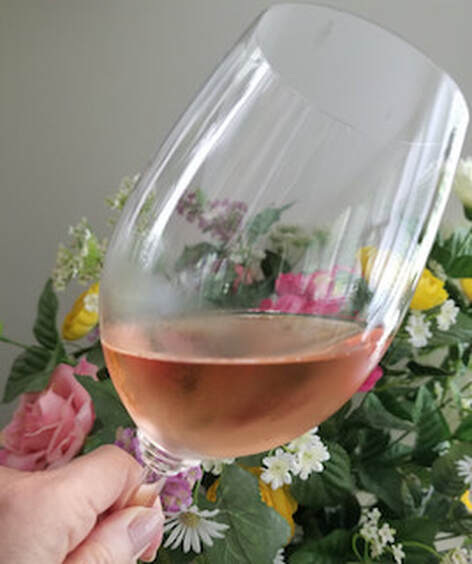


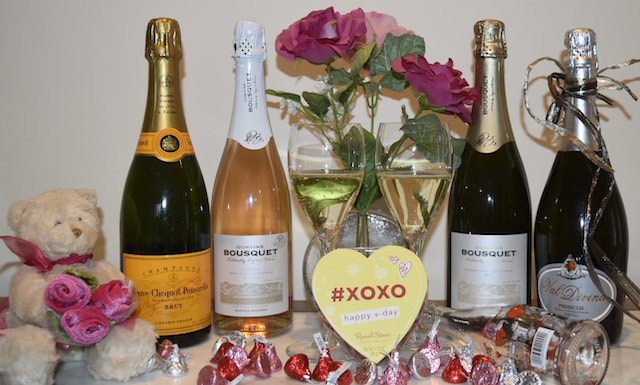

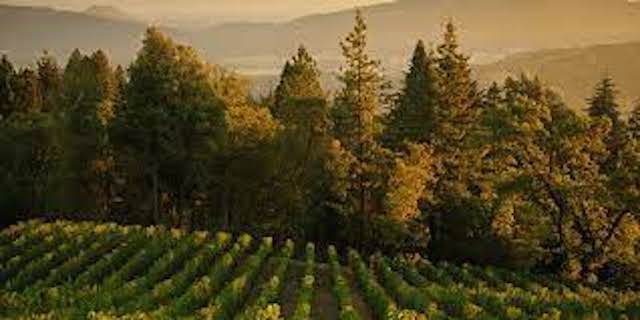

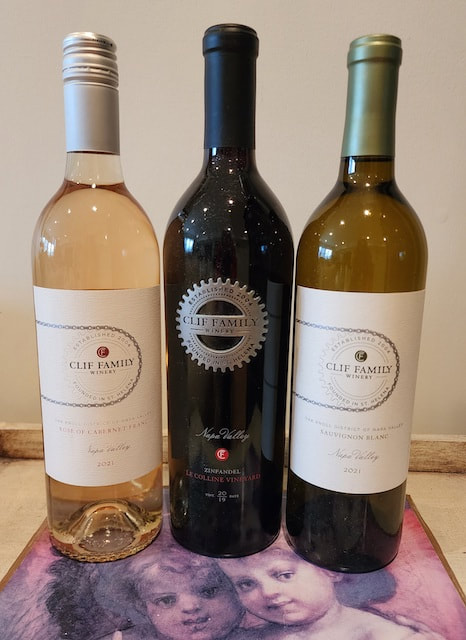
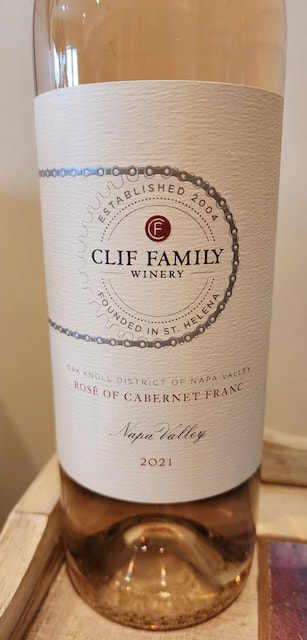
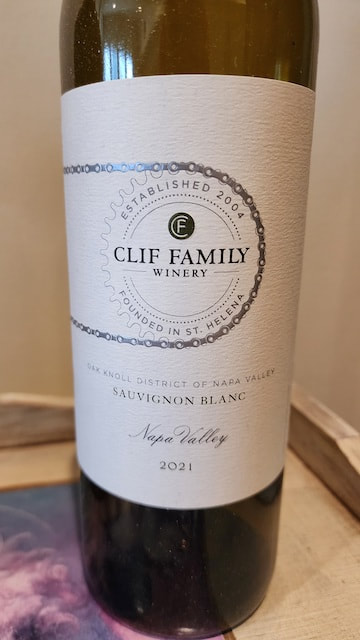
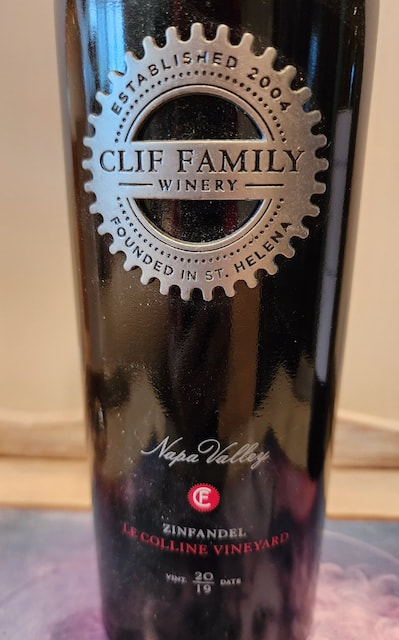
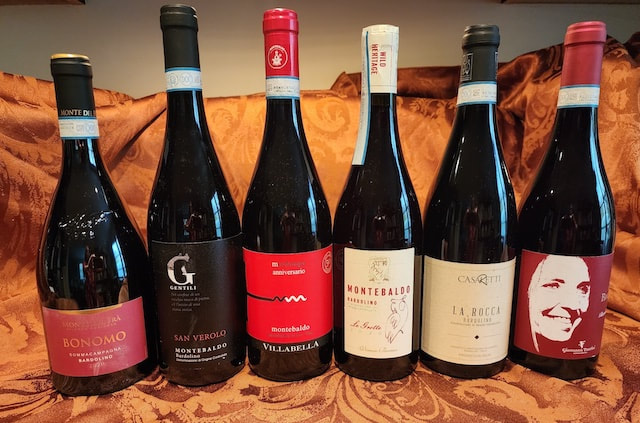
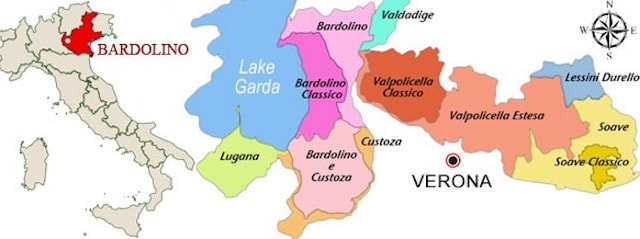
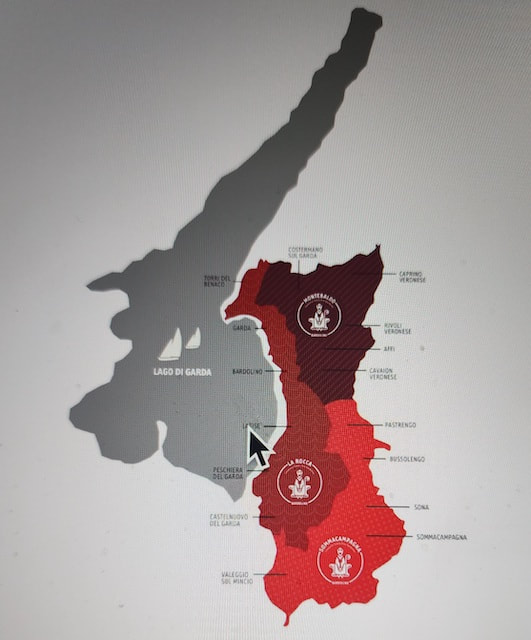
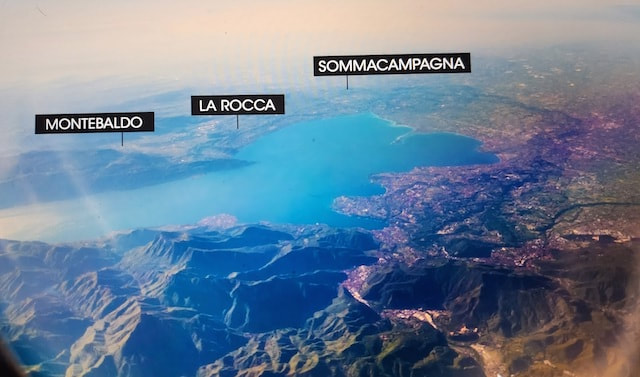
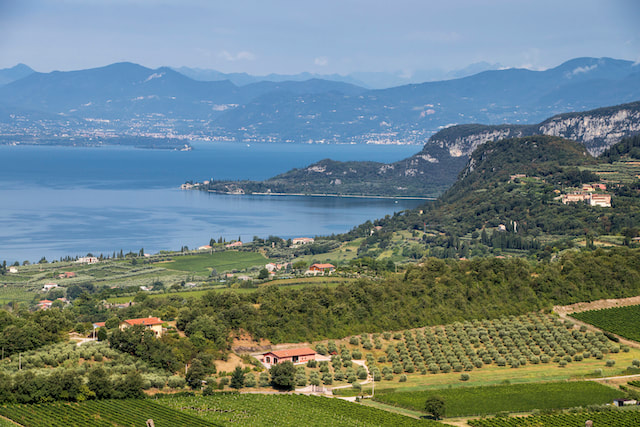
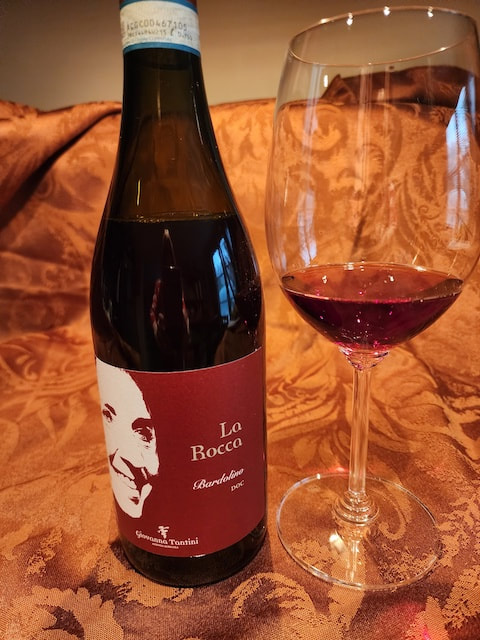
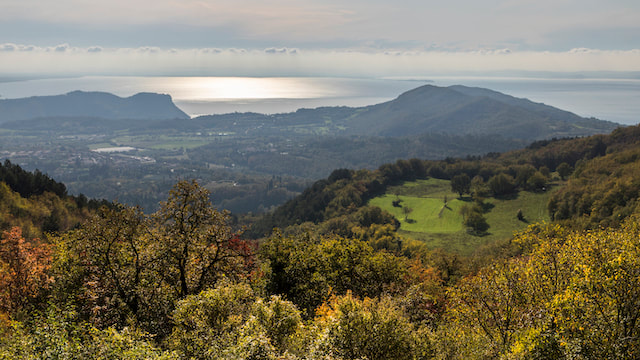
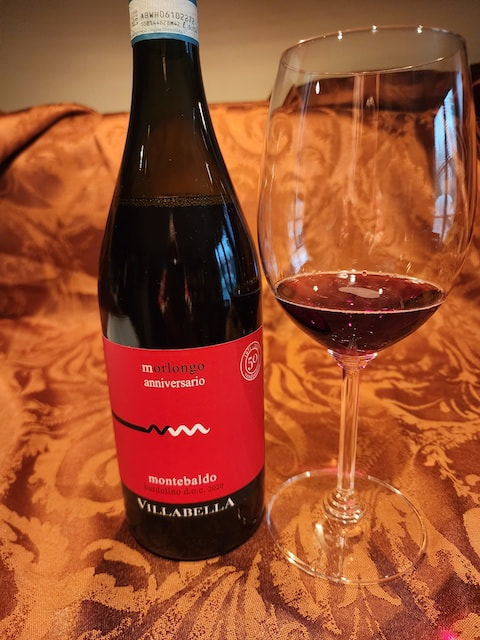

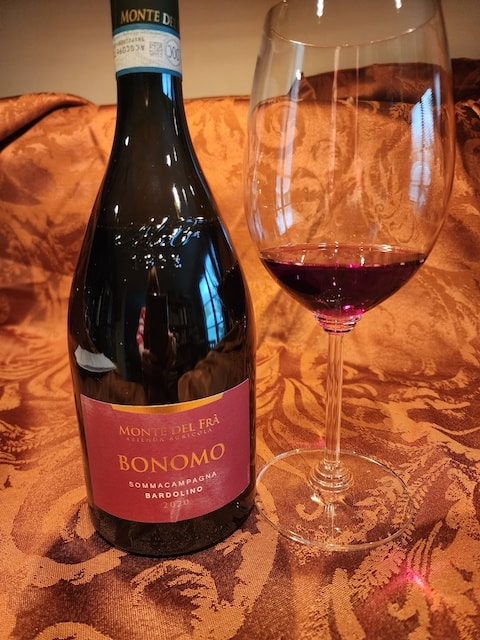
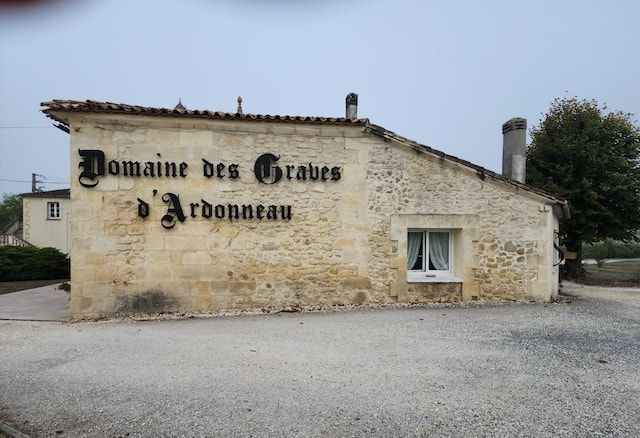
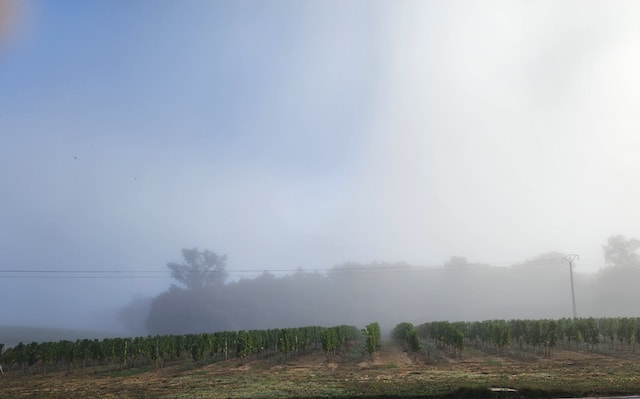
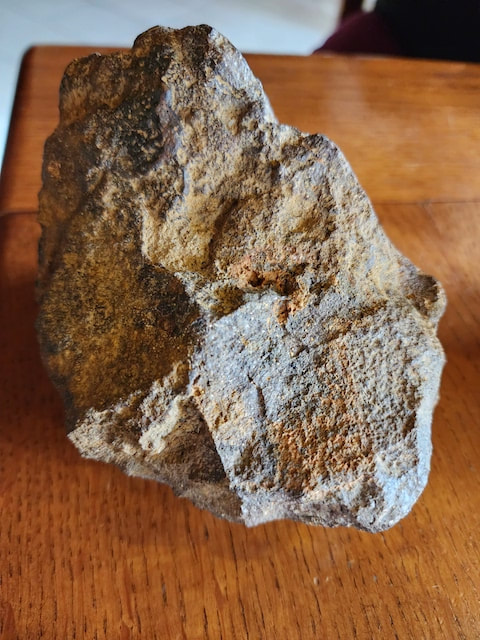



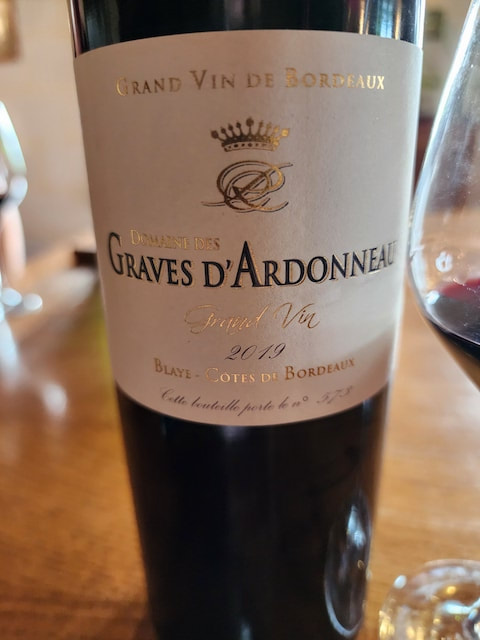
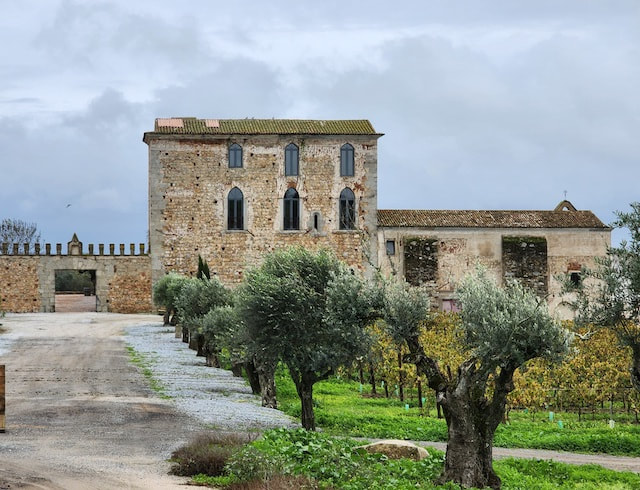
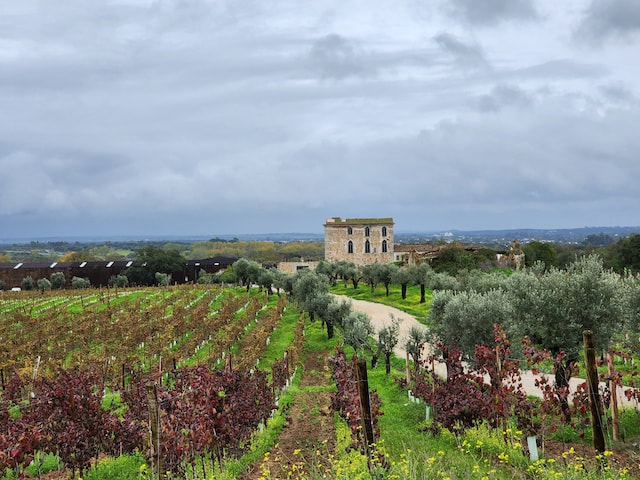
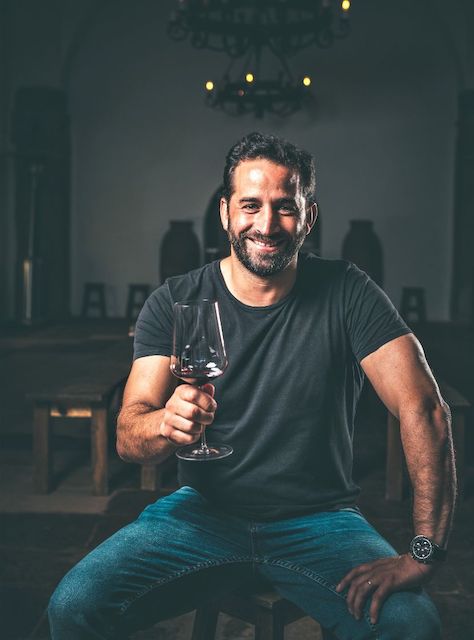
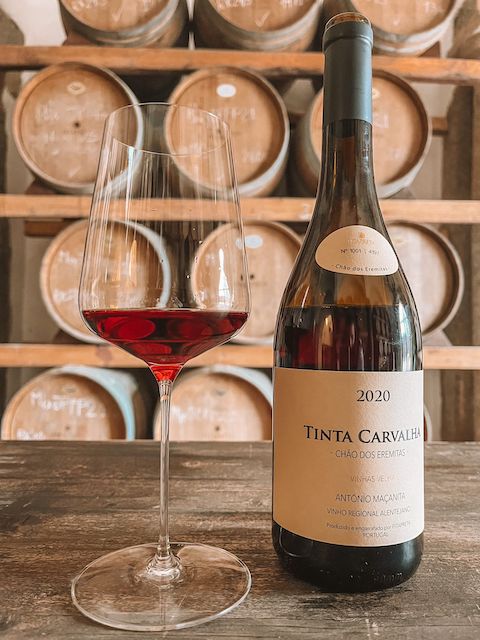
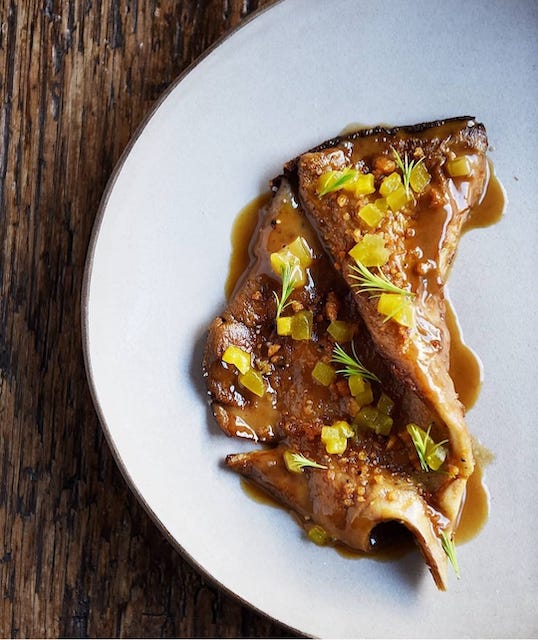

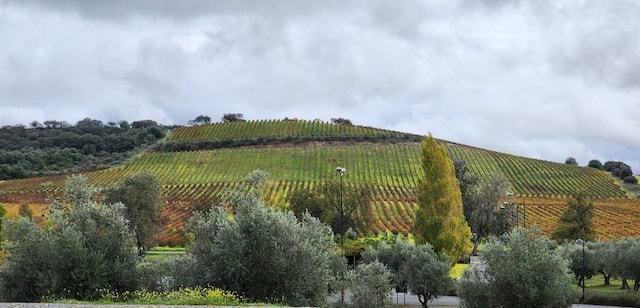

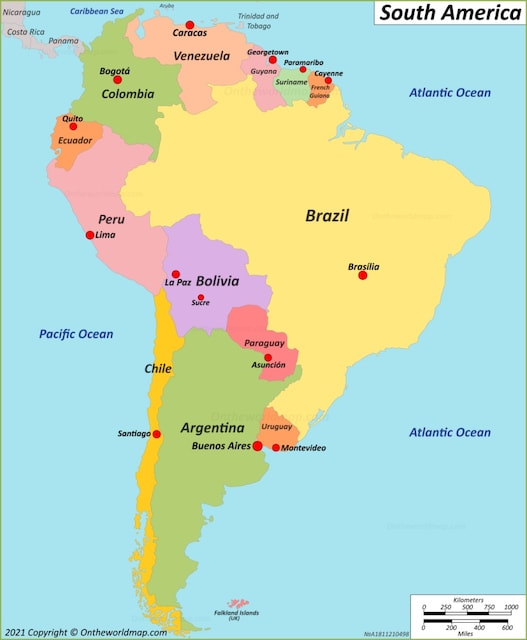
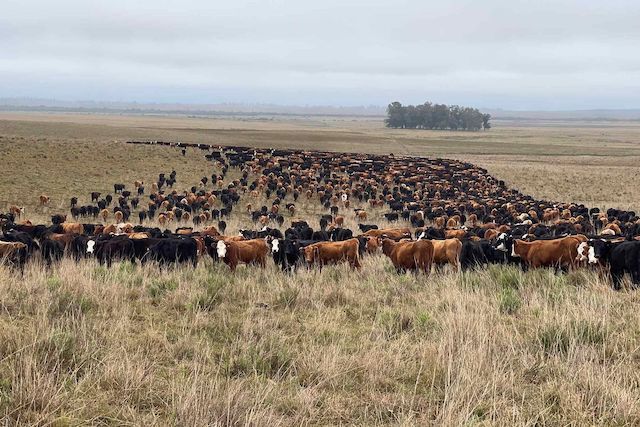
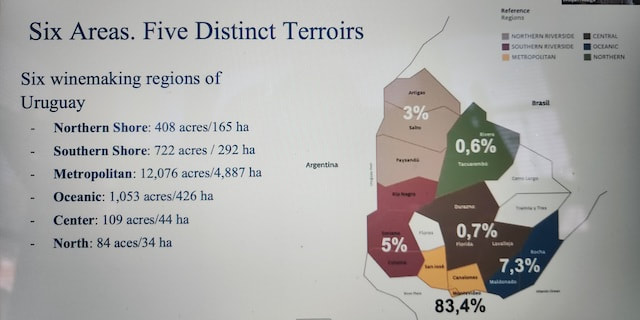
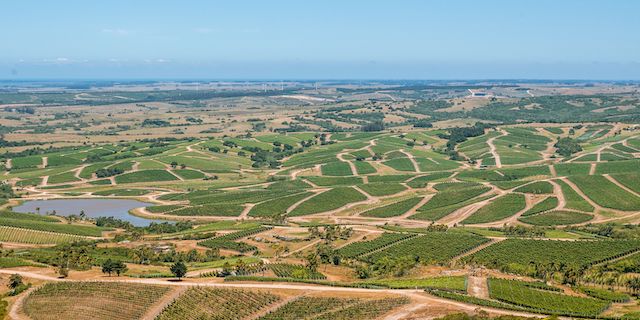
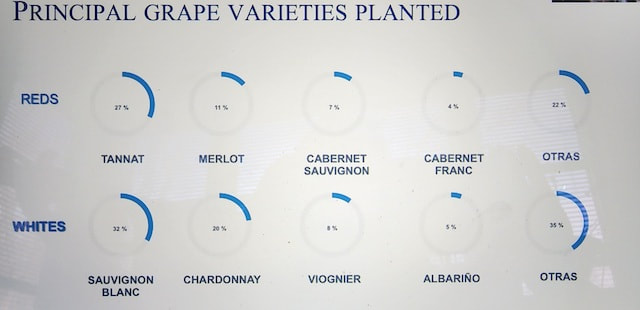
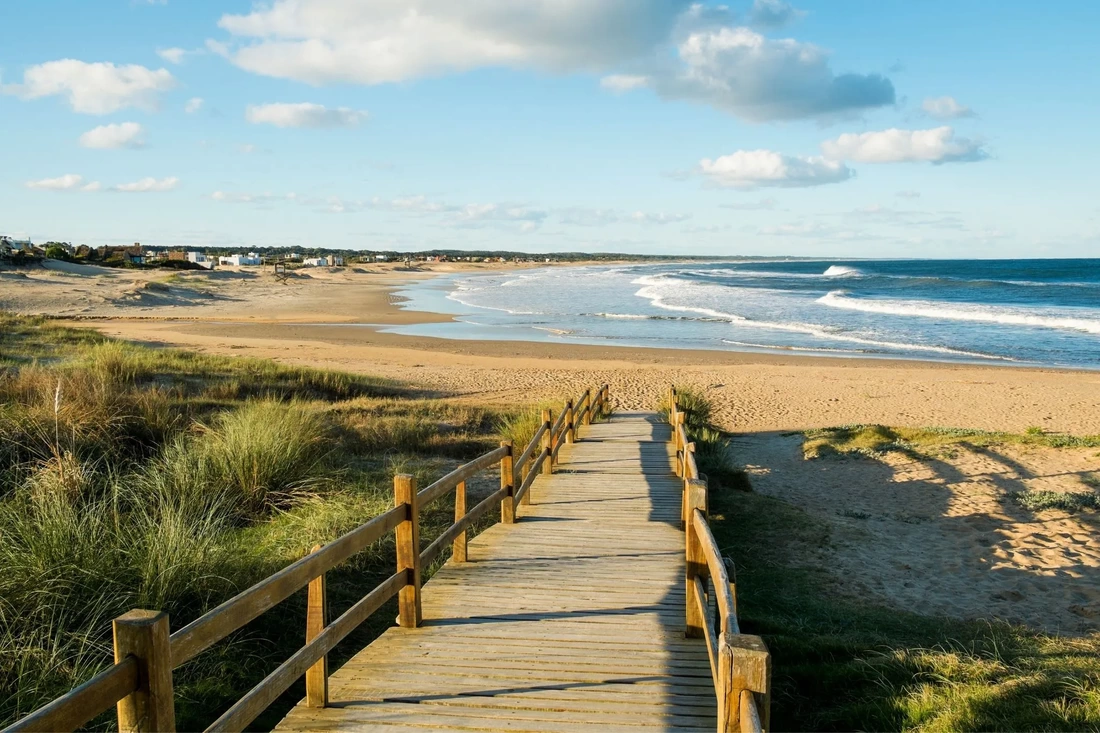
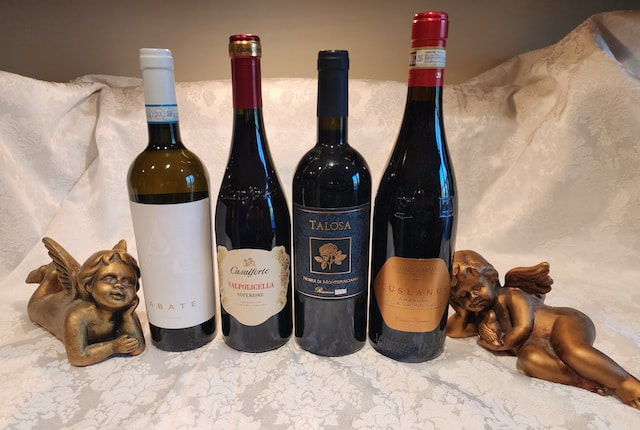
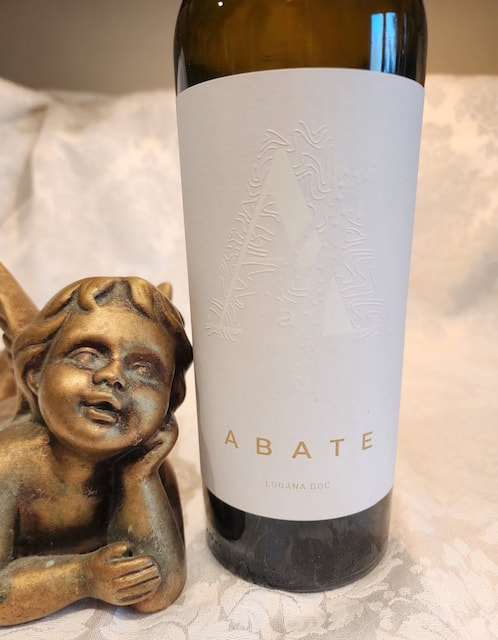
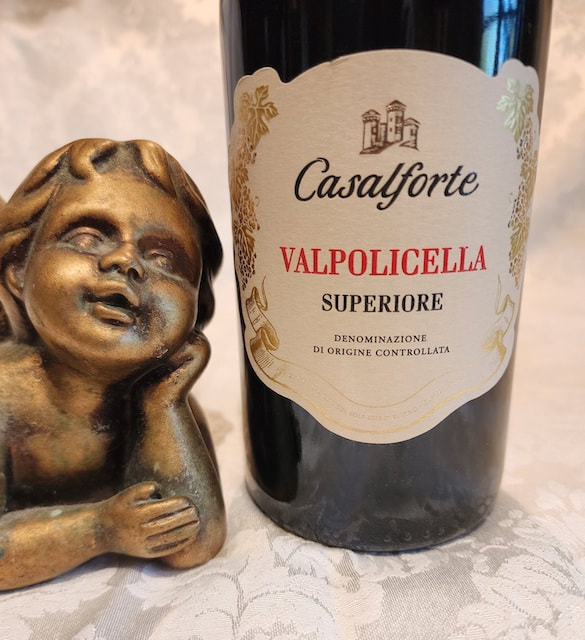
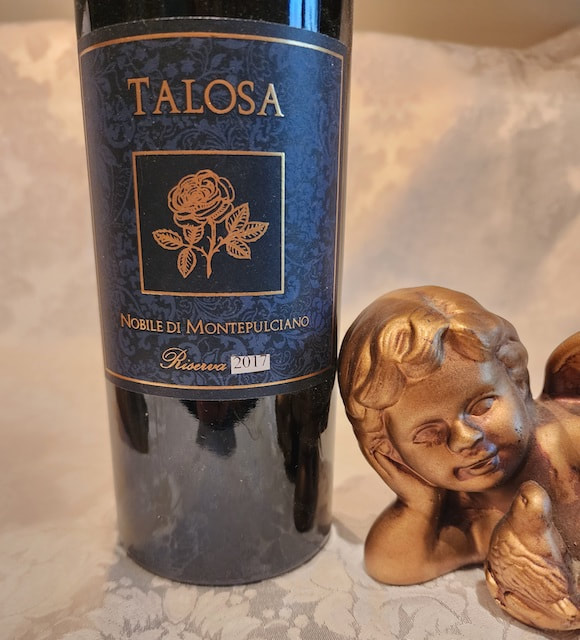
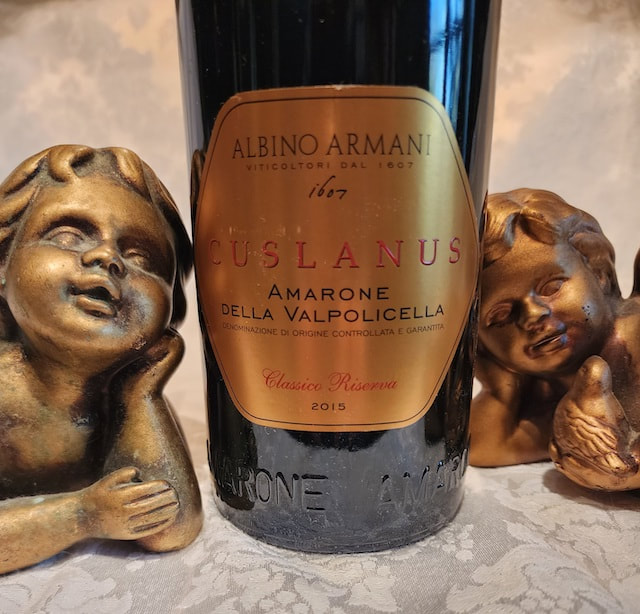
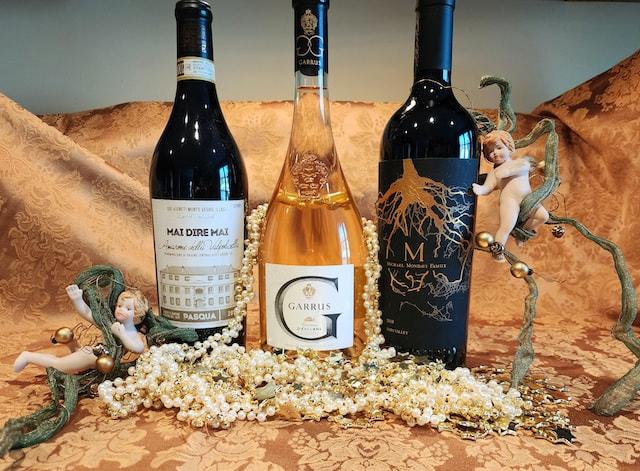
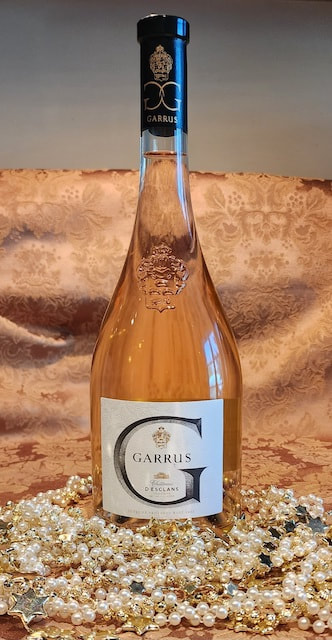
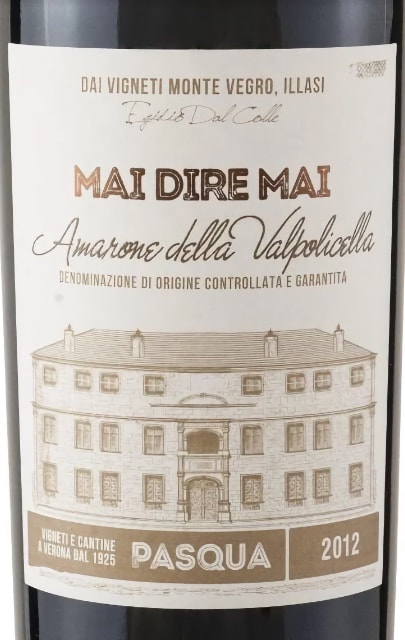

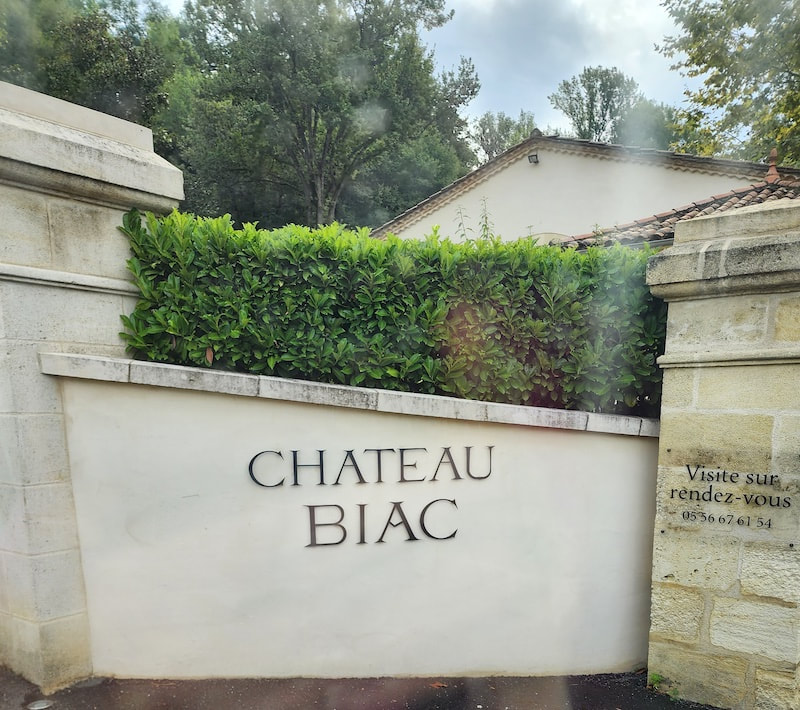


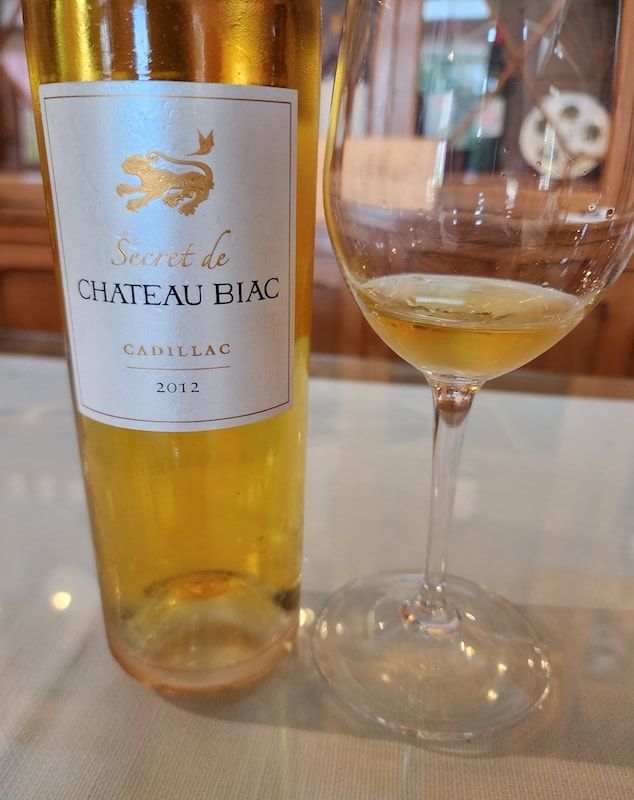
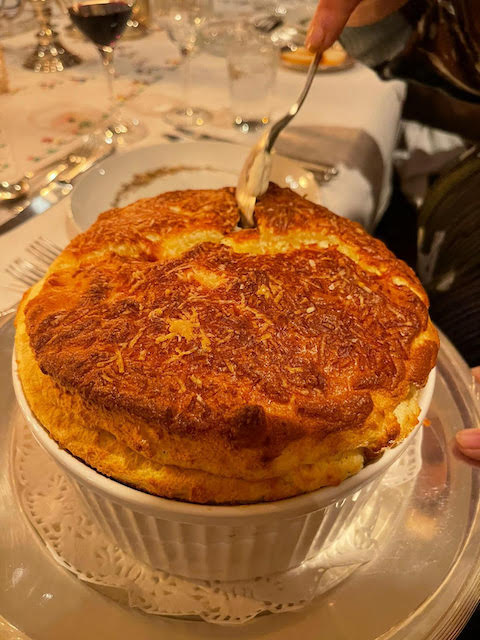
 RSS Feed
RSS Feed